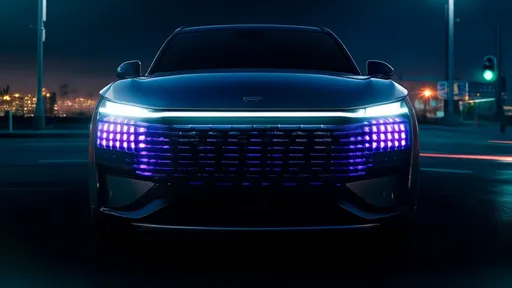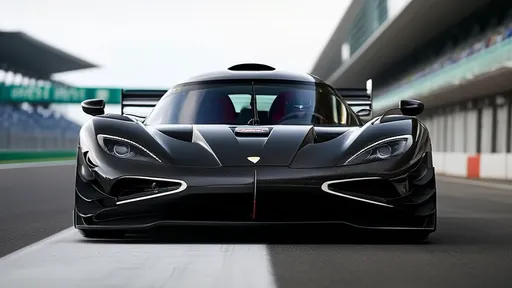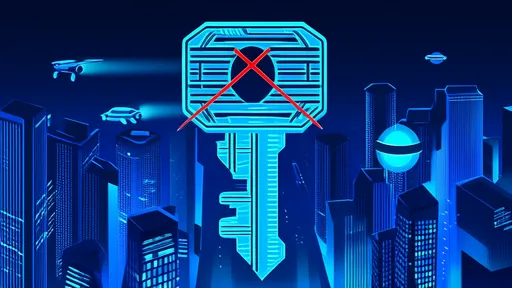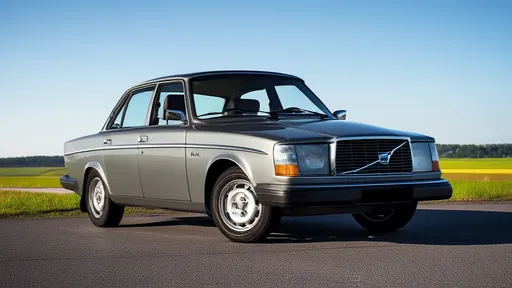The automotive industry is undergoing a radical transformation, and nowhere is this more evident than in the evolving design language of electric vehicles (EVs). One of the most striking changes is the emergence of illuminated grilles, which are redefining the front-end identity of EVs. Unlike traditional internal combustion engine (ICE) vehicles, EVs no longer require large grilles for cooling, freeing designers to explore new aesthetic and functional possibilities. The illuminated grille has become a signature element, blending technology, branding, and aerodynamics into a single, cohesive statement.
The shift from function to form marks a significant departure from conventional automotive design. In ICE vehicles, the grille served a critical purpose: allowing air to flow into the engine bay for cooling. With EVs, the need for such large openings is drastically reduced, as electric motors generate far less heat. This liberation from functional constraints has allowed designers to reimagine the front fascia, turning it into a canvas for innovation. Illuminated grilles are not just decorative; they often incorporate advanced lighting technologies that enhance visibility, improve safety, and communicate with pedestrians and other drivers.
Brand identity through light has become a key strategy for automakers in the crowded EV market. Companies like BMW, Audi, and Tesla have embraced illuminated grilles and light signatures as a way to distinguish their vehicles. BMW’s iconic kidney grille, for instance, now features intricate lighting elements that make it instantly recognizable, even at night. Audi’s "Singleframe" grille has evolved into a dynamic light display, while Tesla’s minimalist approach uses subtle lighting to convey a futuristic vibe. These designs are not just about aesthetics—they’re about creating an emotional connection with consumers and reinforcing brand loyalty.
The integration of smart lighting technology is another frontier in the evolution of EV front ends. Modern illuminated grilles often feature adaptive lighting systems that can adjust brightness, color, and pattern based on driving conditions. Some EVs use their front lighting to signal charging status, autonomous driving mode, or even greetings to pedestrians. This level of interactivity transforms the grille from a passive design element into an active communication tool, enhancing both functionality and user experience.
Aerodynamics and efficiency also play a crucial role in the design of illuminated grilles. Since EVs rely heavily on battery efficiency, reducing drag is paramount. Many automakers are using illuminated grilles with active shutters or smooth, flush surfaces that minimize air resistance. The lighting elements are often integrated seamlessly into these designs, ensuring that style doesn’t compromise performance. This marriage of form and function is a testament to how far EV design has come—and where it’s headed.
Looking ahead, the illuminated grille is likely to become even more sophisticated. Advances in materials, such as transparent OLEDs and laser-etched lighting, could enable grilles that change appearance on demand. Imagine a vehicle that can switch its front-end design from sporty to elegant with the touch of a button, or one that uses lighting to display custom messages or animations. The possibilities are endless, and as EVs continue to dominate the market, the illuminated grille will remain at the forefront of automotive innovation.
In conclusion, the rise of illuminated grilles represents more than just a design trend—it’s a fundamental rethinking of what a car’s front end can be. By combining technology, branding, and aerodynamics, automakers are creating vehicles that are not only efficient and functional but also visually striking and emotionally engaging. As the EV revolution accelerates, the illuminated grille will undoubtedly continue to evolve, shaping the identity of electric vehicles for years to come.

By /Jun 15, 2025

By /Jun 15, 2025

By /Jun 15, 2025

By /Jun 15, 2025

By /Jun 15, 2025

By /Jun 15, 2025

By /Jun 15, 2025

By /Jun 15, 2025

By /Jun 15, 2025

By /Jun 15, 2025

By /Jun 14, 2025

By /Jun 14, 2025

By /Jun 14, 2025

By /Jun 14, 2025

By /Jun 14, 2025

By /Jun 14, 2025

By /Jun 14, 2025